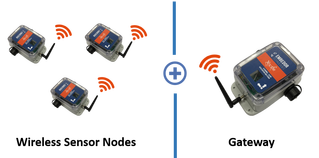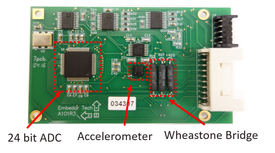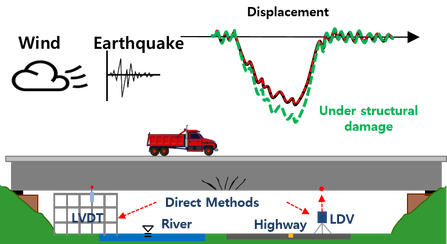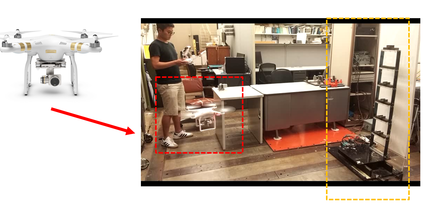Research Areas |
(CLICK!) LIST OF RESEARCH PROJECTS |
SITL's primary research efforts have been in the interdisciplinary area of smart infrastructures, with particular emphasis on smart sensing technology and big data fusion analysis for structural condition assessment to provide resilient and sustainable civil infrastructure systems. Our contributions in this area include the development of sensing technologies using wireless smart sensors and computer vision, development of data analytics tools for structural condition assessment, and conducting full-scale testing of the developed sensors and tools.
Next Generation Wireless Smart Sensor
| SITL is currently working on to develop a next generation wireless smart sensor platform in collaboration with Embedor Technology. The novel sensor platform is optimized for long-term, sustainable structural health monitoring of large-scale civil structures. This next generation wireless smart sensor has a powerful computational core to enable computing at the edge, longer wireless communication range (1km), high resolution 24-bit ADC with programmable sampling rate, and extremely durable electric components for long-term outdoor usage in a harsh environment . ?The application of this novel platform is not limited but includes structural health monitoring (SHM), earthquake monitoring, seismic survey, structure to vehicle communication, etc. |
  High-resolution Sensor Board Embedded in the ?Next Generation Wireless Smart Sensor |
Computer Vision & Drone
Conducting modal analysis is very critical for identifying structural condition. Traditional approach deploys dense array of sensors directly on a structure to extract modal parameters. Using computer-vision and drones, we are trying to conduct modal analysis in a non-contact manner without cumbersome process of installing sensors on a structure. We are now working toward enabling drone-based structural health monitoring focusing on analyzing dynamics of a structure.Data Fusion for Reference-free Displacement Estimation

Structural displacement is very important for evaluating current structural condition. The most precise way for measuring displacement on civil engineering structures is direct measurement (e.g., using LVDTs and LDVs); however, these approaches are expensive and may be very challenging to install on larger structures.
To address this issue, SITL has developed a reference-free displacement measurement that seeks combined use of accelerometers and strain sensors. The proposed strategy fuses the two indirect methods, strain and acceleration, to achieve a combination which compensates for their respective weaknesses. Acceleration-based estimation provides high-frequency information, and the strain-based method makes the estimation of low-frequency components possible. The reference-free displacement estimation method was validated on a full-scale suspension bridge (Sorok Bridge, Korea), demonstrating the method’s efficacy for bridge health monitoring. Shown below are the comparison of displacement measurement from laser-based, DGPS, and proposed method (Data Fusion). The proposed reference-free method shows very good agreement with laser sensor in both time and frequency domain.

Comparison between reference-free method (data fusion) and direct method (Laser)



